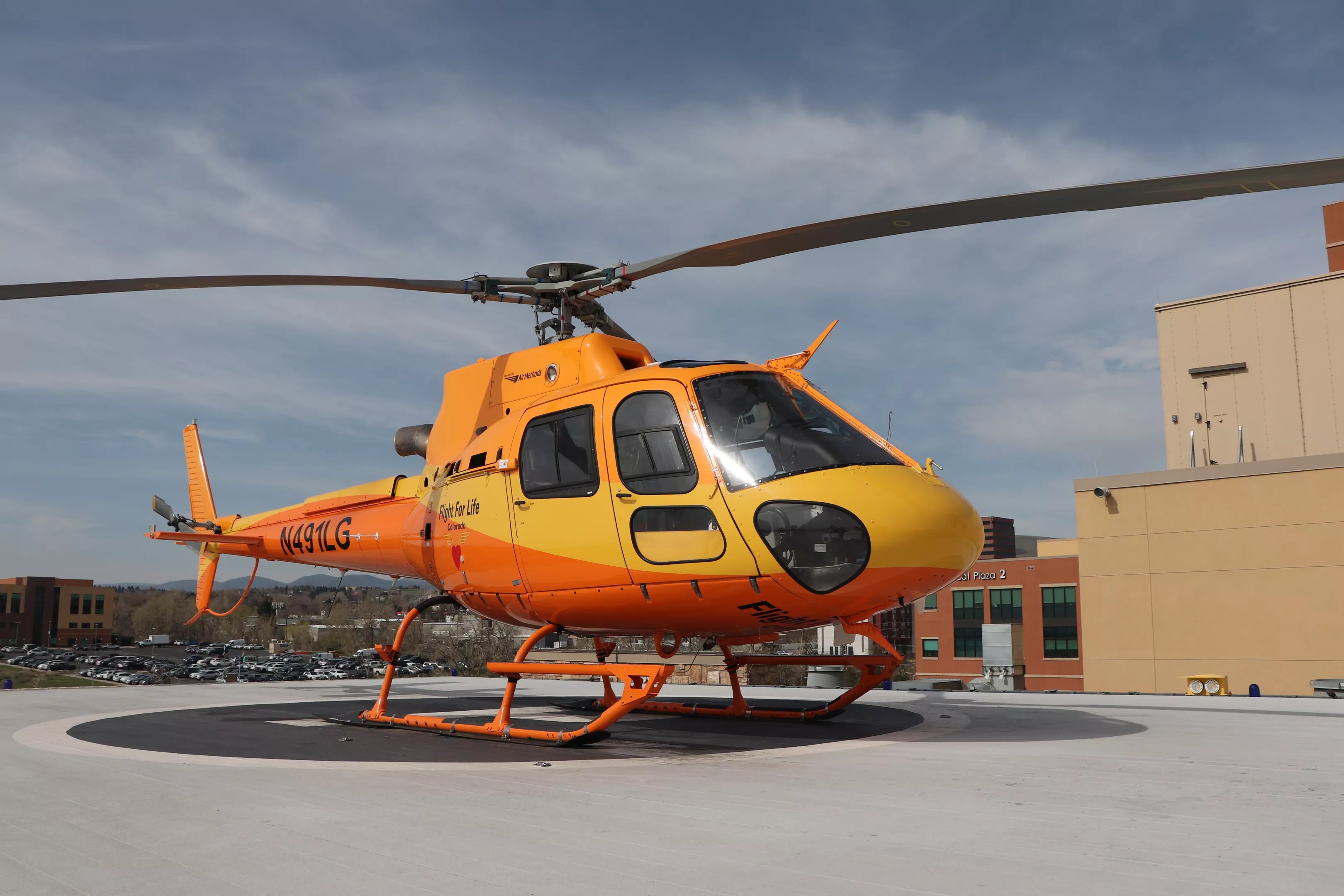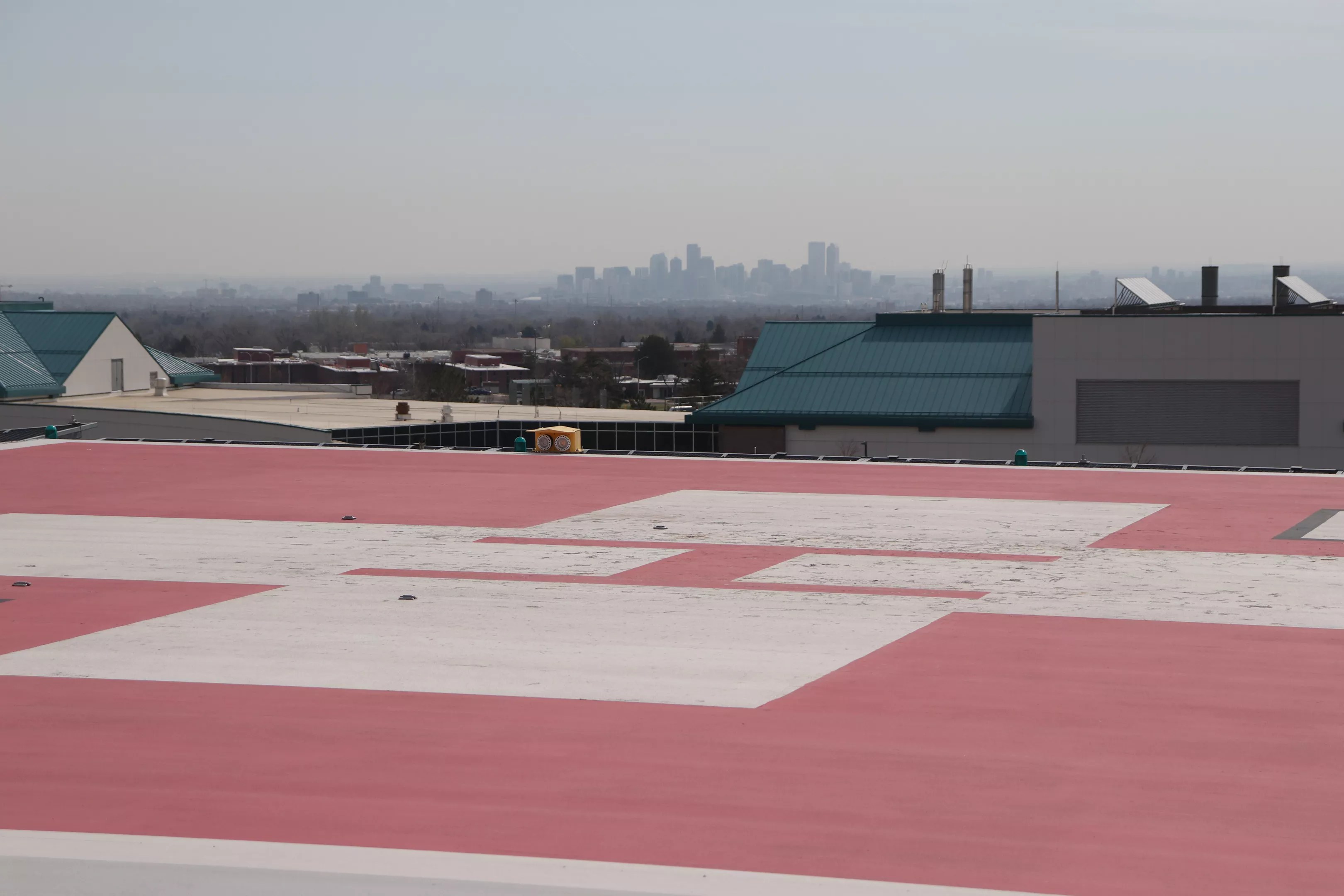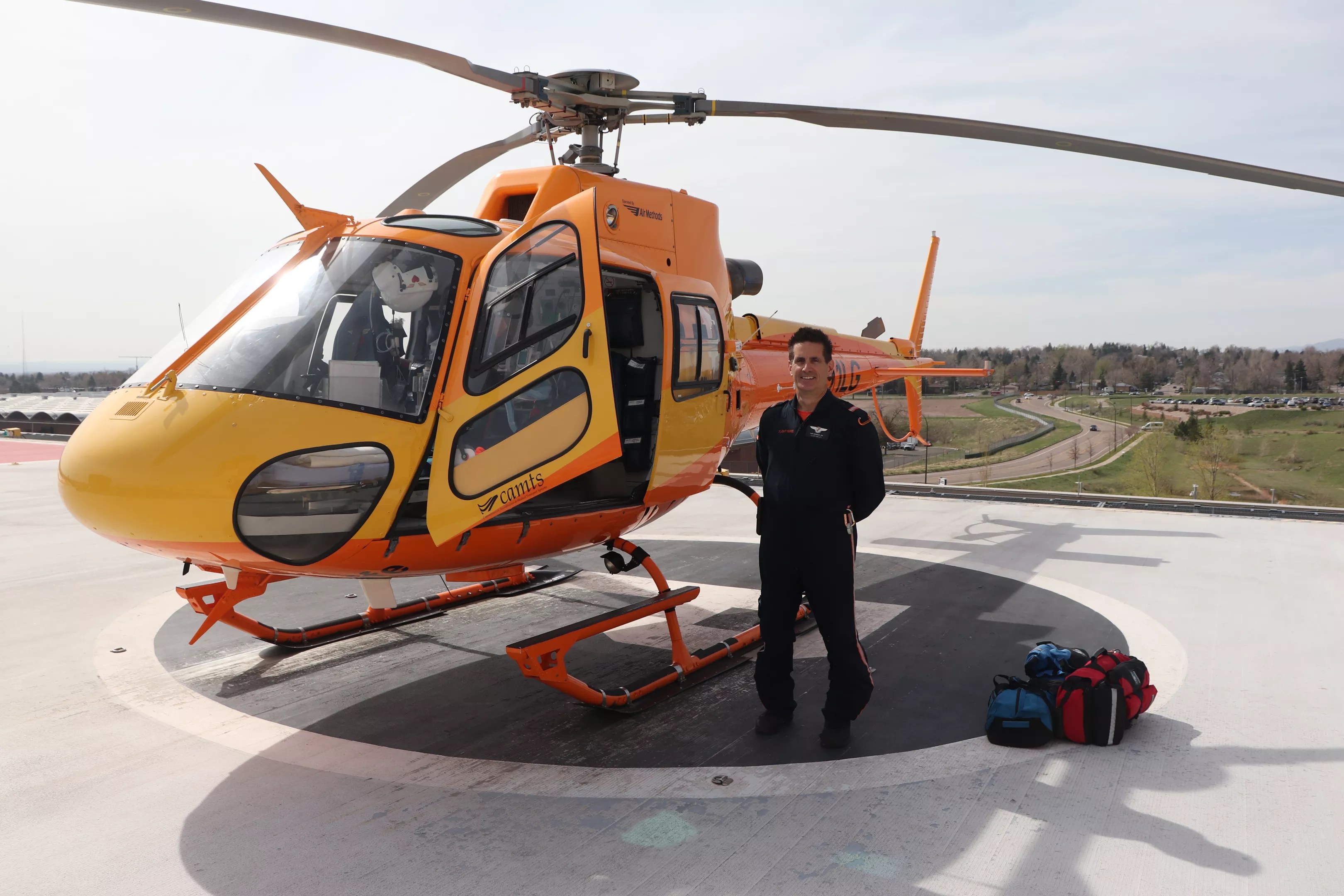
Benjamin Neufeld

Audio By Carbonatix
After celebrating a fifty-year anniversary in 2022, Flight for Life – the nation’s oldest civilian emergency air ambulance program – is staying busier than ever in its home state of Colorado.
Population growth and a bustling tourism industry have led to an increase in rescues for the Centura Health critical-care transport program, with flight crews saying that demand for the helicopter service is higher than ever right now.
Kathleen Mayer, the director of Flight for Life Colorado, tells Westword that the program has seen above-average injury rates over the past two ski seasons, and with summer still ahead, rescuers expect one of the busiest years on record.
“We have climbers, we have ATV-ers, we have hikers that fall – all kinds of different things,” Mayer says of the typical rescues that Flight for Life deals with during the summer season.
When news happens, Westword is there —
Your support strengthens our coverage.
We’re aiming to raise $50,000 by December 31, so we can continue covering what matters most to this community. If Westword matters to you, please take action and contribute today, so when news happens, our reporters can be there.
It’s the “busiest time for the helicopters,” she adds.
In the winter, ski resorts have medically trained ski patrollers and are often close enough to hospitals that air transport for injured skiers and snowboarders isn’t necessary. When the weather warms up, however, the backcountry is more accessible.
“We’re going to be busy,” Mayer asserts.
Thanks to large amounts of snowfall this past winter, ski resorts throughout the state are just wrapping up an unusually long season. The Mary Jane side of Winter Park, for example, had its last day on May 29, while Arapahoe Basin plans to stay open until June 4. As a result, Mayer says, there were more ski-related injuries and rescues later in the season.
The opposite situation actually resulted in a high number of rescues during the 2021-2022 ski season. Winters with less snow result to less terrain being open, which creates more overcrowding on the trails that are open – and more collisions between skiers and injuries.
According to the Colorado Office of Economic Development & International Trade, tourism in Colorado reached record levels in 2019. Numbers dipped in 2020 with the pandemic, but began to rebound in 2021.
While the months ahead will be very busy for Flight for Life rescuers, saving lives at a fast and efficient rate is nothing new for Colorado air crews. “It was not uncommon to do five or six flights in a single twelve-hour shift,” Mayer says of her time as a flight nurse in the 1980s.
The program – which turned fifty in October 2022 – has had to expand over the years to keep up with the demand of tourism and the growing popularity of high-adrenaline sports and activities such as skiing, rock climbing, mountain biking, whitewater rafting and more. Colorado’s population was less than half of what it is now when Flight for Life formed in 1972.
Running its first rescues out of Denver, the program has since added bases in four other cities throughout the state: Colorado Springs, Frisco, Pueblo and, most recently, Durango.
According to Mayer, Flight for Life was created when concerns around growth and mountain recreation merged in 1970 after Colorado won the bid to host the 1976 Winter Olympics. “There was concern that international television exposure would bring a lot of growth to the state, just because it’s so beautiful, and that we didn’t have the water or infrastructure to support that growth,” she says. “The other challenge was going to be the geographic spread of the venues.”
Olympic ski jumping was planned for Steamboat, while some of the Nordic events were set for near Gunnison, and other competitions at the future Beaver Creek. n”So that was a huge area to be covered for emergency medical transportation, and the Eisenhower Tunnel wasn’t complete yet,” Mayer says. “So there was concern about how we were going to get patients to Denver quickly with only one bore of that tunnel open and Loveland Pass being a challenge to traverse if the roads weren’t great.”

The St. Anthony Hospital helicopter pad.
Benjamin Neufeld
The 1976 Olympics never actually made it to Denver – voters decided not to provide the funding to make it happen. But two other developments motivated the creation of Flight for Life.
“In the early ’70s, there were a number of pilots and soldiers coming back from Vietnam who had seen the value of helicopters moving injured soldiers from the front lines back to the aid stations, like a M.A.S.H.-type thing,” Mayer says. “They came back to the States and realized that there was no civilian equivalent for that. Traffic deaths were astronomically high, and people who lived in rural areas suffered much more morbidity and mortality than [those who] lived close to a city with a hospital.”
The other big motivating factor was the 1970 Wichita State University football team plane crash.
“In early October 1970, a twin-engine aircraft carrying forty people associated with the Wichita State University football team crashed into Mt. Bethel along Colorado’s Continental Divide, killing thirty-one passengers,” reads an excerpt from Colorado Encyclopedia. The plane was headed for Logan, Utah, and had opted to go over the mountains rather than fly over the lower-altitude terrain of southern Wyoming.
“Copilot Skipper had been gaining altitude since departure from Denver, but it was quickly becoming apparent that the plane was too low to proceed over the lofty granite barrier looming ahead,” continues the excerpt. “At 1:14 pm, highway workers saw the plane dip and strike the side of Mt. Bethel, exploding twice on the slope.”
There were only nine survivors. “Analysis afterward revealed that had there been a faster way to get in and get injured people out by helicopter, there might have been more,” Mayer says.
Flight for Life began at the old St. Anthony hospital with a single Alouette III helicopter, which was chosen for its ability to perform well at high altitude, notes Mayer. It was the first civilian service of its kind in not just Colorado, but the United States.
“There were no guidelines or operating protocols or even guidelines for what to wear or what to carry,” she says. “They made it up as they went along and got it to work.”
Over the years, the program continued to add additional helicopters, planes, trucks and bases. Flight for Life’s evolution was driven by the same forces that led to the creation of the program in the first place: population growth and the proliferation of outdoor recreation.
“That growth was all organic,” Mayer recalls. “We were always invited to open a new base wherever we went. We didn’t just take a helicopter somewhere and tell the local hospital and EMS that they had to use it.”
Despite its overall success, Flight for Life has had one issue of conflict with its original on-the-ground colleagues in Denver, says current flight nurse Dan Gormley. “We will not land in the metro area,” he says.
The main reason is that it’s simply faster for an ambulance to pick up and carry a patient to a hospital when the patient is already in a city. Another deciding factor dates back to the 1970s, Gormley says.

Dan Gormley with Lifeguard 1.
Benjamin Neufeld
“There was a time when Denver Health, which was [then] Denver General, and St. Anthony’s Hospital were still primary competitors,” he explains. “And so there was a lot of rivalry there.”
Gormley claims a “gentleman’s agreement” was eventually made, and Flight for Life vowed to stay out of Denver for good.
When Mayer first started as a flight nurse, the program was “about 70 percent scene work” – cases that involve patients at the scene of their injury – such as on highways, at ski resorts, or in the mountains. The other 30 percent involved “inter-facility transfer,” transporting already hospitalized patients to other hospitals for needed medical procedures not available at the original location.
“That’s basically reversed [now],” Mayer says. “And it’s because there are more hospitals out there, and there’s a significantly expanded scope of care for EMS, so we’re not needed as much for scene work; paramedics can do a great deal more than they could twenty or thirty years ago.”
Still, the “scene work” that Flight for Life continues to do today is just as important to the rescuers.
“We literally landed on top of the Flatirons,” Brown says of a middle-of-the-night mission during his first year as a Flight for Life paramedic. “The pilot had to kind of keep trying until he could figure out exactly the way to land.” The pilot managed to find a little landing area on a saddle near the top of South Boulder Peak where they could pick up a hiker after search-and-rescue teams carried him up from farther down the mountain.
Flight for Life crews are now coming to the end of their “shoulder season,” a slow time of year between ski season and when summer recreation picks up, according to Gormley.
With temperatures starting to go up in the mountains – and Colorado Parks and Wildlife beginning to issue notices urging the public to use caution outdoors – expect to see more and more choppers flying overhead in the coming weeks.